The Texas mystique is real, but its economic dynamism could just as easily be said to come from the distinct characters of its many successful cities. Some of those metros in the past have been synonyms for sprawl. But there’s a move afoot to make them connect and breathe again.
The On Numbers Economic Index, a monthly measure of the economic vitality of 102 major US markets, in July ranked Dallas-Ft. Worth second (behind Provo, Utah); Austin third; and Houston fifth, with San Antonio a respectable 33rd.
Another recent metro-area ranking of the “Most Aspirational Cities in America” by economist Joel Kotkin and demographer Wendell Cox on The Daily Beast found Austin in first place and Houston in third. Economic factors accounted for 50 percent of the ranking, with quality of life accounting for 25 percent and demographics accounting for another 25 percent. When examined purely on employment growth alone, it was a Texas sweep, with Austin first (15.4 percent), Houston second (12.2 percent) and San Antonio leaping up to third (9.4 percent). According to their analysis, Texas has created 1 million new jobs since the recession.
Companies are seizing opportunity with the same gusto as the individuals they employ.
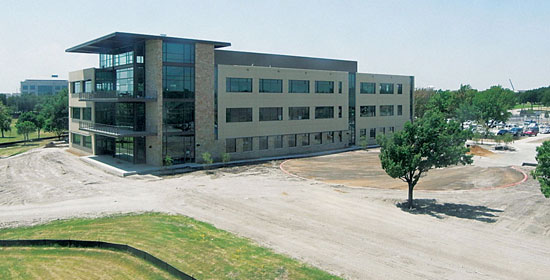
From January through June this year, the San Antonio Economic Development Foundation worked with 14 companies to bring more than 2,000 jobs to the city.
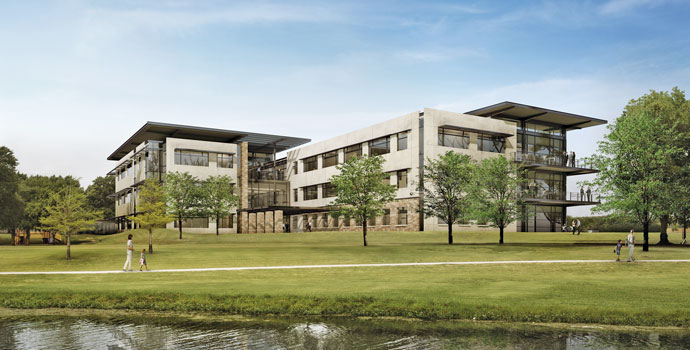
“Tyler Technologies has a long history in the Dallas/Plano area and we are excited to reinforce our commitment to the area with these significant investments,” said John S. Marr Jr., Tyler’s president and CEO, when Tyler Technologies broke ground in 2012 on its new division and corporate headquarters.
In early August the Houston City Council approved a tax abatement reinvestment zone that gave the green light to a plan by Chevron U.S.A. to construct a new 50-story, 1.7-million-sq.-ft. (157,930-sq.-m.) tower, part of a downtown expansion that the company says will create 1,752 jobs. The project already has received a $12-million commitment from the Texas Enterprise Fund, and stands to welcome up to another $3 million thanks to the tax abatement.
California-based Chevron employs 9,000 in the Houston area, which serves as headquarters for nine different Chevron businesses. The new building will blend with two existing Chevron facilities downtown as a new campus-style enclave.
“The Lone Star State and its largest city play a vital and growing role in Chevron’s global business,” said Bereket Haregot, president of Chevron’s Business and Real Estate Services group, when the project was announced in July.
Insurance Policy
The Chevron skyscraper continues Houston’s hot streak. But the Dallas-Fort Worth MSA is on its own streak of rejuvenation and reinvention.
Around the same time as Chevron’s announcement, Dallas-based national developer KDC broke ground at its new 186-acre (75-hectare) master-planned project in Richardson, Texas. State Farm will lease 1.5 million sq. ft. (139,350 sq. m.) in three towers, which are currently under construction.
“Offering this kind of creative development to North Texans, adjacent to the DART light rail system, is what the work force of today is seeking and residents and visitors expect,” said Steve Van Amburgh, CEO of KDC.
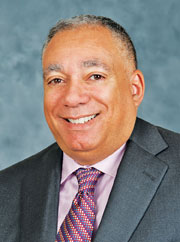
“We are working to create a ‘workplace of the future’ in areas attractive to existing State Farm employees as well as to prospective candidates, including a live/work/play environment.“
— Michael A. Jones, vice president of administrative services, State Farm
The three towers are part of KDC’s $1.5-billion master-planned project near the intersection of President George Bush Turnpike and North Central Expressway (US 75). The new State Farm facilities will serve as a hub that will provide claims, service and sales support to State Farm customers. The site will be staffed by a combination of new hires and existing employees. Once completed, State Farm will have capacity for up to 8,000 employees throughout the Greater Dallas area. The company’s Texas operations are not limited to the area: In late August, it completed a successful $110-million sale-leaseback agreement with W. P. Carey for its 1,400-employee operations center in Austin, which it’s maintained in the state capital since 1994.
As announced later in July, State Farm is pursuing a similar concept in the Phoenix suburb of Tempe, Ariz., where the company will lease 1.9 million sq. ft. (176,510 sq. m.) at a new $600-million mixed-use development being spearheaded by The Ryan Companies and Sunbelt Holdings. The company is mulling similar options in Atlanta.
“Customer expectations and needs are changing every day — and our customers are our priority,” says Michael A. Jones, vice president of administrative services for State Farm. “We know that having an engaged, committed work force is essential to fostering an environment where that priority is the focus every day. And we know that we need to be flexible and adaptable to change with our customers’ changing needs and preferences. With that in mind, we have been intentional in selecting locations across the United States for our new multi-functional hub operations that would allow for several things. Those include flexibility to adapt and change as the marketplace and our customers’ needs and preferences change. We also look for representation of different time zones to serve customers at their convenience.

Outpost of Cool
Dropbox is the latest cool Bay Area firm to drop into Austin, while still trying to “Keep Austin cool.”
The universally popular file storage and sharing service is opening a sales and customer service center in the state capital. The firm in August showed seven job openings each at its newly announced offices in Austin and Dublin, Ireland. Meanwhile, it was looking to add 50 new positions across various departments at its HQ in San Francisco.
Dropbox founders Drew Houston (left), CEO, and Arash Ferdowsi, CTO, like what they see in Austin.
Photo courtesy of Dropbox
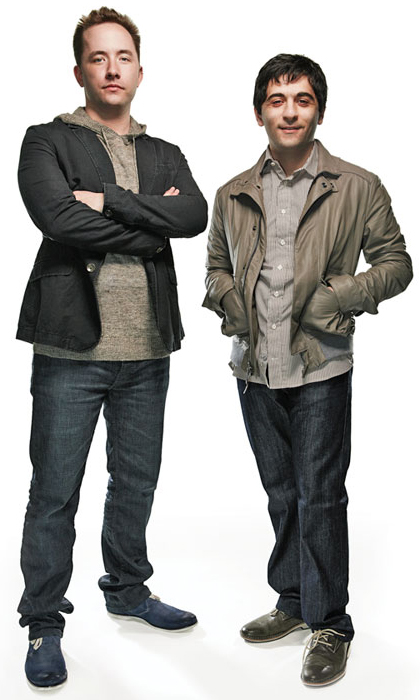
Jones says Dallas, Atlanta, and Phoenix are attractive locations to both existing and prospective employees, and “meet the criteria for the type of environment we want to create in order to retain and attract top talent. These locations complement our existing operations centers through the United States and Canada, and allow us to more effectively serve customers at their convenience.
He says the company’s site selection decisions “allow for locations with growing populations, including people with skill sets that match our customers’ needs. The ability to draw from an existing pool of skilled talent and experienced employees is also important. We are working to create a ‘workplace of the future’ in areas attractive to existing State Farm employees as well as to prospective candidates, including a live/work/play environment — with housing, public transportation, shopping and entertainment all within easy access. And, we envision buildings and offices that foster a creative and collaborative environment — open spaces and meeting areas, a bright and new look and feel, comfortable gathering areas, and easily accessible amenities.”
Oriented Toward Transit
The office towers in Richardson, slated for early 2015 occupancy and aiming for LEED-Silver certification, certainly seem to fit the bill.
In December 2012, KDC announced the acquisition of the necessary acreage from Stratford Land and Bush/75 Partners to develop the master-planned project in Richardson, just after the area was rezoned by the City of Richardson. The project is part of the city’s Tax Increment Financing Zone 2 outlined in the Bush/75 Urban Center Development Infrastructure Support Strategy. Once all phases are complete, the development will include 5 million sq. ft. (464,500 sq. m.) of office space, 300,000 sq. ft. (27,870 sq. m.) of grocery, restaurant and retail space, 3,925 multi-family residential units and two hotels.
Toby Grove, president of KDC, compliments State Farm for seeking to create such a welcoming environment.
“Everything in corporate America is about attracting those best employees, and it seems like the most forward-thinking companies out there are thinking this way as they populate new facilities,” says Grove.
He says KDC was originally looking at part of the site for a build-to-suit for another corporate end user. Then his team met with the State Farm people.
“We didn’t know who they were, but we proposed that site as an alternative,” he says. “One thing they found attractive was we literally were on the DART line. Ridership is increasing, and we think ultimately it will be the way a lot of those folks get to work.”
The move comes as DART mulls its first expansion after 30 years in service.
“I think you’ll see more and more of it,” Grove says of transit-oriented development. “We have 186 acres, and are talking to several other potential users, including multifamily and retail, and there’s a real desire to cluster around these rail stops.”
You Are Now Free To Grow About the State
Southwest Airlines is pursuing multiple opportunities to grow in its home state, starting with the new $100-million headquarters it’s building in Dallas. In San Antonio, thanks to a city grant agreement, it’s converted an abandoned K-Mart into a new location for its San Antonio Customer Support and Services Call Center, which is retaining or creating a total of 800 jobs.
Meanwhile, in Houston, the airline last year committed to pay $156 million for expansion 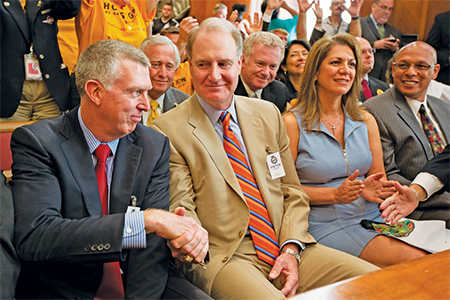 of William P. Hobby Airport’s international terminal with five new gates and a new customs facility. According to the agreement, the city will not hike its ticket surcharge to help pay for the expansion, and Southwest will cede control of the expansion to the city when it’s finished paying for the project.
of William P. Hobby Airport’s international terminal with five new gates and a new customs facility. According to the agreement, the city will not hike its ticket surcharge to help pay for the expansion, and Southwest will cede control of the expansion to the city when it’s finished paying for the project.
In May 2012, after the Houston City Council voted to approve expansion of William P. Hobby Airport for international service, Southwest Airlines CEO Gary Kelly (center) shakes hands with Executive Vice President Ron Ricks.
Photo by Stephen M. Keller courtesy of Southwest Airlines
Legacies
Tyler Technologies, a leading provider of end-to-end information management solutions and services for local governments, is just completing its new 142,000-sq.-ft. (13,192-sq.-m.) corporate and division headquarters at KDC’s Legacy Business Park in nearby Plano. In 2005, KDC and other investors purchased EDS assets throughout the US, including three buildings containing 1.1 million sq. ft. (102,190 sq. m.) that were part of the former EDS headquarters campus in Legacy Business Park in Plano. KDC rebranded the project The Campus at Legacy and embarked on an extensive renovation and re-tenanting plan. In February 2013 KDC sold its interest in the development, which was 98-percent leased.
The 26-acre (10.5-hectare) Tyler campus includes a redevelopment of the former Plano Family YMCA, connected via walkway to a new 82,000-sq.-ft. (7,618-sq.-m.) office building. The rest of the story? That YMCA had a former life too: As the fitness center for the EDS corporate campus that Legacy has now been redeveloping for many years.
John Yeaman, chairman of Tyler Technologies, knows all about it. He once served as the head of EDS’s real estate department after repping the company as a broker for 20 years, and came on board just as Legacy was launching. Eventually he was hired by Tyler, led the company for a number of years, and then became chairman.
“When we began to get involved in real estate needs, the guys came to me and said, ‘Hey, you know more than anybody,’ ” he says of the new project. “I was involved in getting our first lease done in Plano. We quickly outgrew that, and it was time to do something else. We started our site search close to three years ago.”
Tyler originally intended to lease space, not buy real estate, and had found an attractive office building on the toll road, south of its current location. “But we did a zip code search to find where everybody lives,” he says, “and in fact they all lived north. Coming south on the toll road can be a nightmare. We’d be asking them to come the wrong way for our benefit and not necessarily theirs. We tried to find a way around that traffic problem, and couldn’t do it.”
A broker Yeaman knew told him to look at the old EDS fitness center.
“Obviously I knew quite a bit about it,” he says. “I drove out there.”
He saw the 26-acre parcel, half of it in a flood plain. He saw soccer and baseball fields, tennis courts, a full gymnasium and swimming pool.
“Most people thought there was no way to reuse that building,” he says. “I said ‘We’re in the software business — we ought to be able to do some things that are different. So I said, ‘Let us tie this up for 60 days and do our homework.’ When we looked closely, we thought, ‘You know what? We can spend not a lot of money on this Y building, and build a new building next to it.’ The indoor pool had a glass globe over it — we filled it in, and it’s our cafeteria now. We spent a minimum amount, and it’s turned out better than we expected.”
When the process started, Tyler was looking for enough seats for 350 people. Now it has seats for 500 … and already 480 will be moving into the new campus.
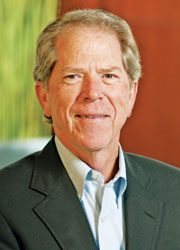
John Yeaman, Chairman,
Tyler Technologies
“It’s been a bit of a headache,” Yeaman says of the fast company growth. “From the time we started all this, we’ve grown so much, that what we would have saved we’re going to eat up in new seats. We were originally going to leave 25,000 square feet [2,323 sq. m.] unfinished. Then we discovered we wanted to finish it all out and leave vacant space. Now we are about to move in, we have a little extra space, but not much.”
However, the acreage is sufficient for even more growth should the company’s expanding divisions such as its fast-growing Courts & Justice division require it.
“We have enough expansion area to build almost 300,000 more square feet [27,870 sq. m.] of office space,” says Yeaman.
KDC’s Toby Grove says the area was conceived as a corporate neighborhood and campus when Ross Perot and EDS originally put it together. As far as he’s concerned, “the original vision is purely intact.” He calls the Tyler project “an amazing adaptive reuse” of the Y facility that, again, keeps a company’s people top of mind.
“It’s all about trying to attract and retain the best employees,” he says. Attracting the best companies is a great start.
“I’d argue that real estate is still local, and more so, that the actions and support from various communities, cities and counties is just as important as the state,” Grove says. “There’s a lot going on in Texas, for simple reasons — low taxes and regulation. But then the municipalities and counties are equally supporting.
“We build all over,” he says, “and I can’t say it’s as easy or there’s as much cooperation provided all across the country.”
